Small Islands is a tile placement map building game by Mushroom Games (France), but distributed in the USA by Lucky Duck Games. In the game, players control a clan exploring a magnificent archipelago (a group of islands) filled with vital resources. Players will be exploring and discovering natural resources, ancient temples, and other surprises that can possibly score them points. Lucky Duck Games has been leading the board game industry with great games such as Destinies, the Chronicles of Crime series including 1900, and a bunch of games they bring to the US market published by other publishers.
What’s in the Box?
- 56 Landscape Tiles
- 4 Double-sided Starting Tiles
- 1 Navigation Tile
- 4 Ship Tiles
- 32 Clan Houses (8 of each color)
- 16 Bonus Tokens
- 12 Discovery Tokens
- 45 Prestige Tokens
- 12 Objective cards (normal)
- 12 Mission Card and 12 Reward Cards (advanced)
- 3 Alexis Cards and 15 Expedition Cards (solo mode)
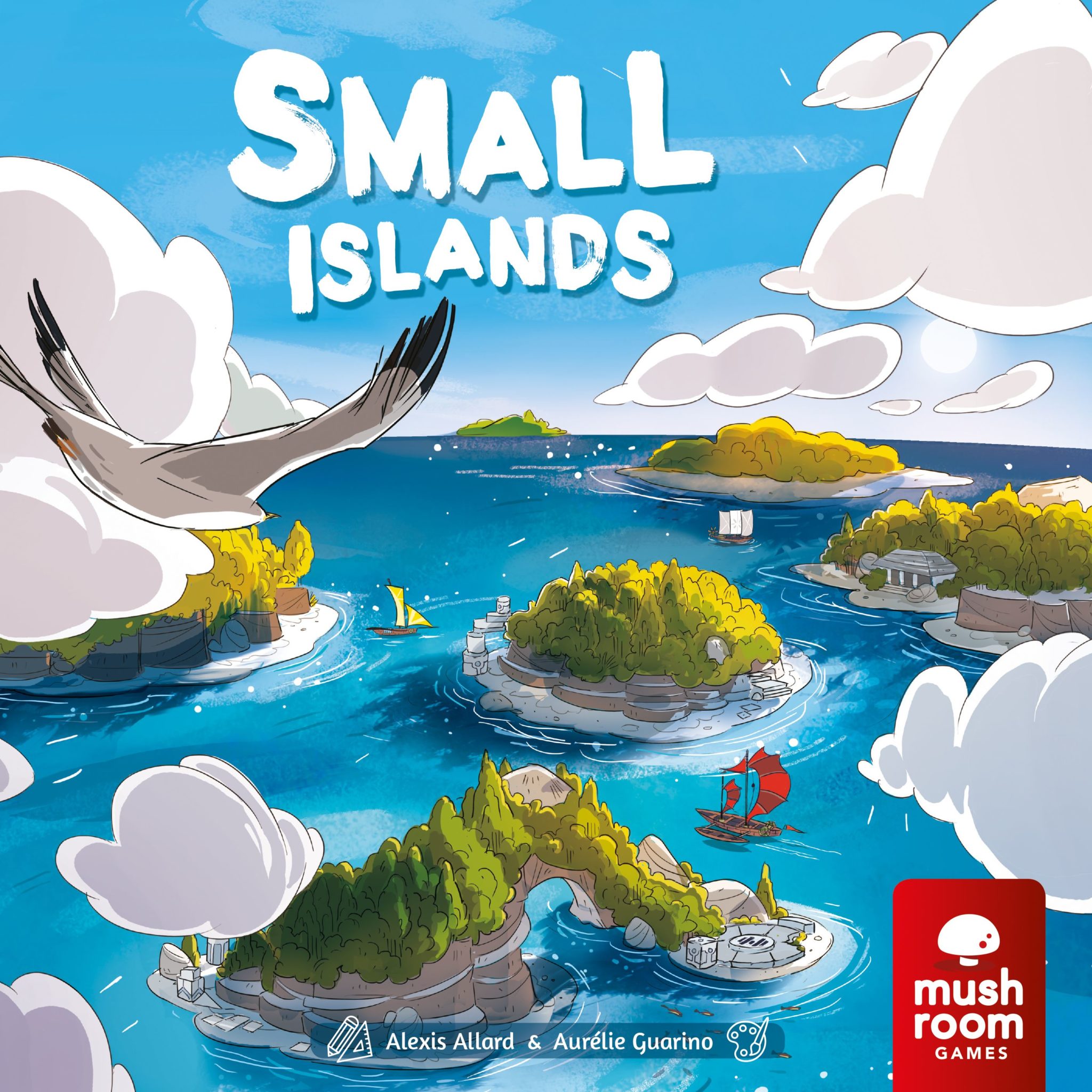
How’s it Play?
You play 4 rounds where you will have 6 tiles in the navigation stack and 3 tiles laid out forming something like a market of tiles you choose from. Once a tile is taken, a tile from the navigation stack is flipped out to replace it. Once the navigation stack is empty, players can take a different kind of action to end the round.
So at the beginning of each round players will have 3 objective cards. Players each choose one to keep for the current round, which will help them with decisions in that round to score the most points according to that card. They will then choose another card to keep for the next round. This card will also help in some decisions, as they can plan a little for the future. The last card is discarded back into the stack of objective cards.
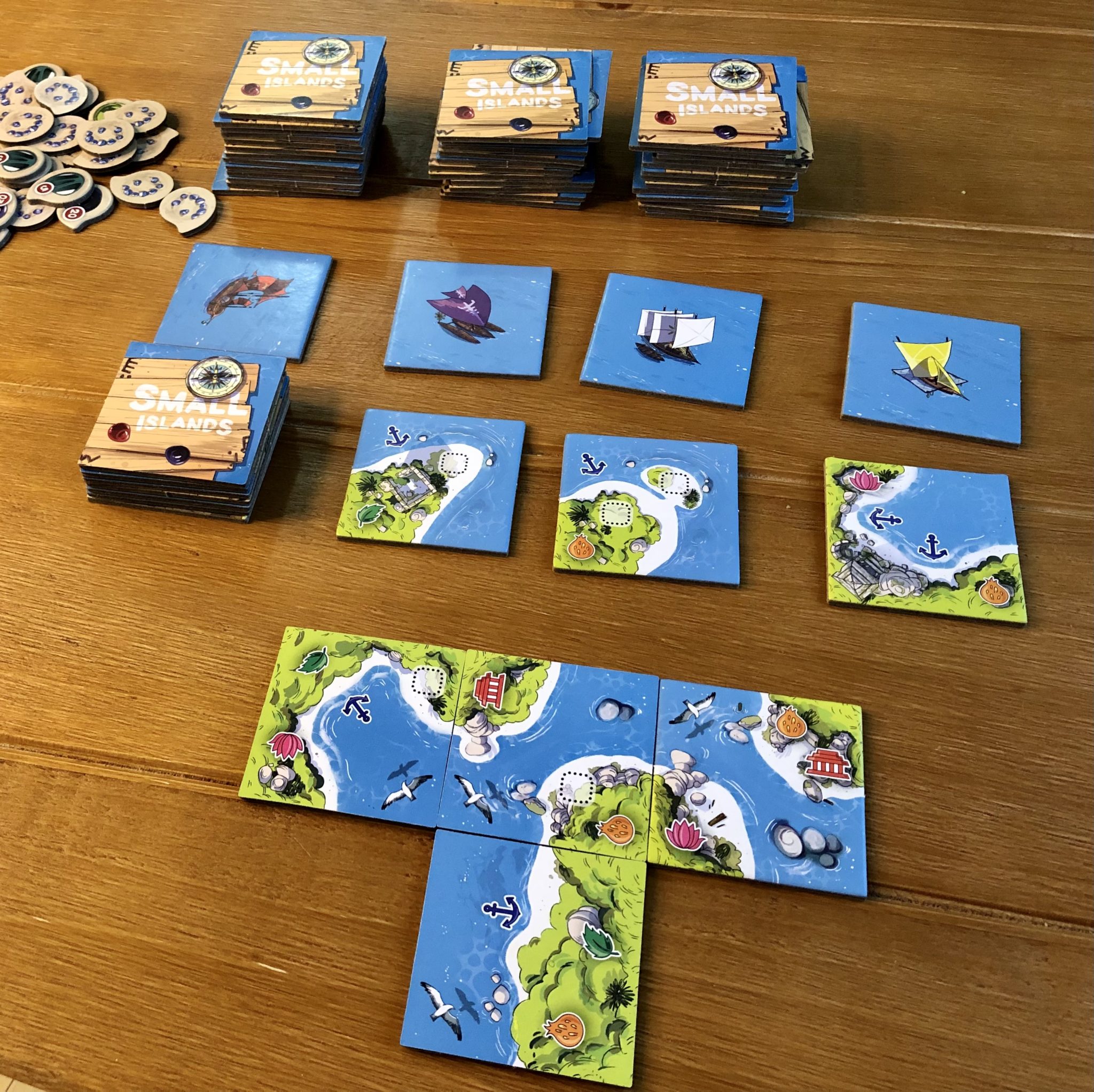
At the beginning of each round, each player will then have the one card they kept from the previous round for the upcoming round, and will then draw 2 more to then make the same decisions, one too keep for this round, one to keep for the next round, and one to discard.
In the advanced mode, players will be able to make their own cards to gain points how they want, they will choose one mission part and another condition part. When placed together they form a normal objective card. So the advanced mode just makes everything more flexible.
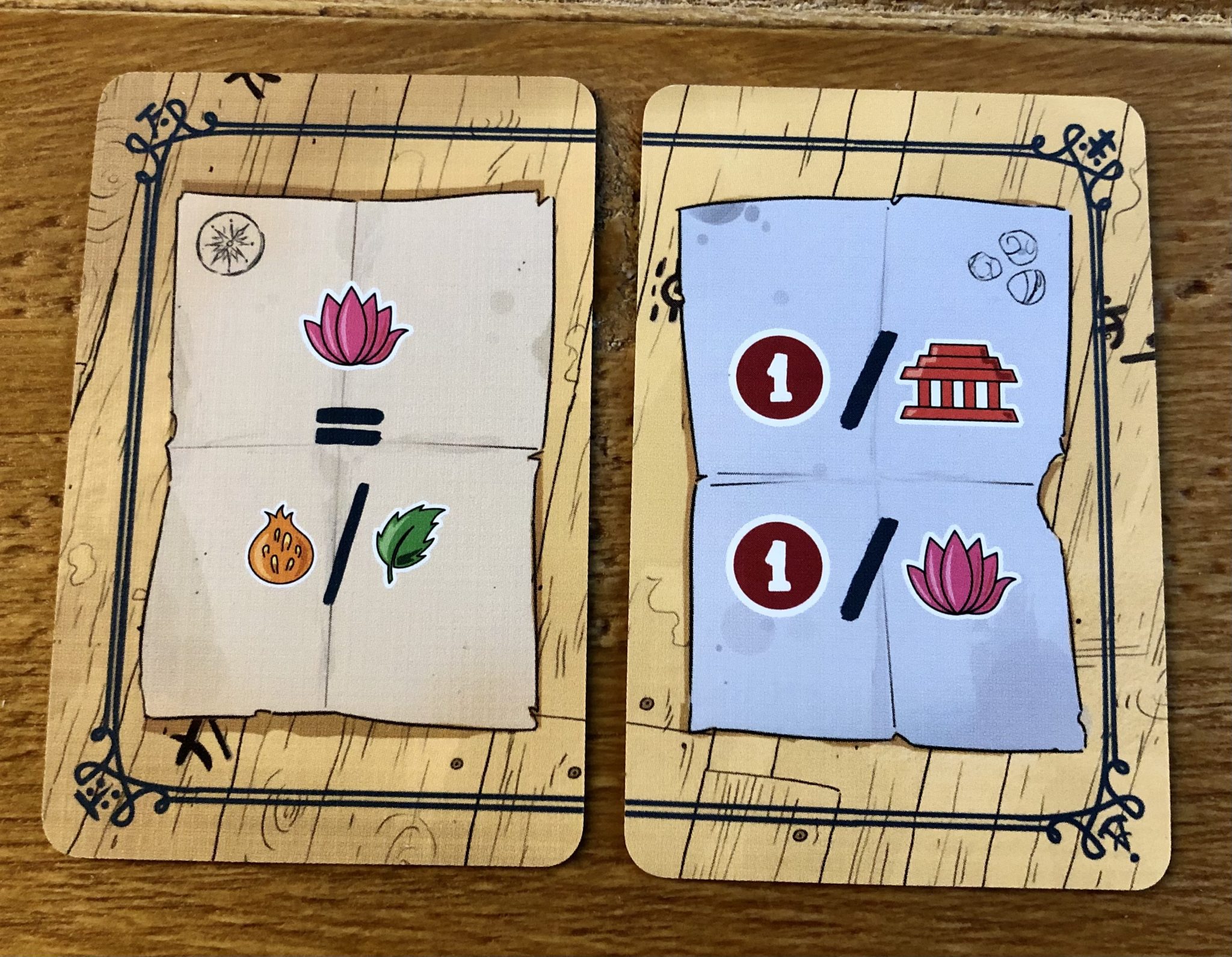
During turns, players will be able to do one of 2 actions, explore or land. Players will have to explore until the navigation pile is empty, at that time the land action can be taken. Don’t worry, I’ll get to that in a minute.
When exploring, you will choose one of the available tiles, add it to your hand (which has 2 tiles, now 3), and then choose one to add to the map that everyone adds to. Tiles need to be placed where land touches land and water touches water. They can be oriented in any direction as long as the illustration is coherent, and the tile needs to be adjacent to another tile. Players will be forming islands and thus forming a map together. When placing tiles, you want to play and plan according to your current and possible future objective cards.
Whenever the navigation pile is empty, players can at any time then take the land action. When taking this action you will take the ship tile of your color, or if it’s already on the map, you can place a grey ship tile. This tile needs to obey placement rules, so there needs to be a water place for the ship tile to be placed on. If there isn’t, then this action cannot be taken and the players will need to continue exploring. When a ship tile is placed, it ends the exploration phase and the reward phase begins.
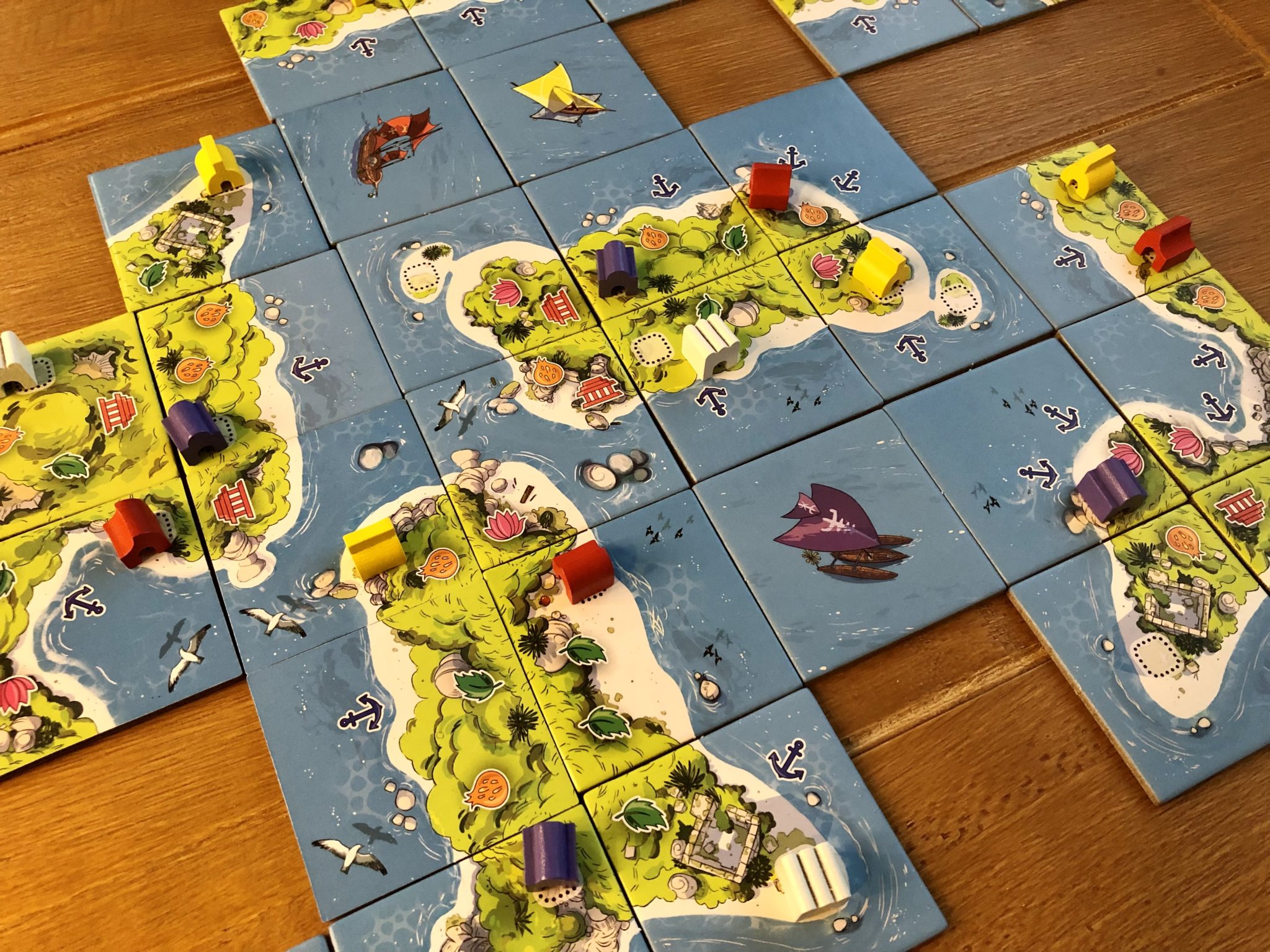
Players will take turns placing their clan houses on islands to earn prestige points, starting with the player who took the land action to end that phase and then proceeding in clockwise order. Players will reveal their objective cards, and place houses on islands to score points according to their objective card. An island is score-able if there are at least 2 tiles that connect together. The island doesn’t have to be finished for players to place their houses on it to score points. For each house you place, you score the points shown on your card by taking that many prestige points. You can place a maximum of 4 clan houses in a phase but once an island has one of your clan houses there, it can’t have another one in the future.
Objective cards are discarded for this round and players continue to the next round by drawing 2 new objective cards, deciding on one to use for the upcoming round and one to use for the future and discarding the third. Then players will explore and or land again and then end and score their cards. The game ends after 4 rounds or if you run out of tiles to form the navigation stack or none are left during the exploration phase. Players then count their prestige points they already have plus their ship tile will score one point for each port located on each of the 8 surrounding tiles to them. The player with the most points wins.
In addition to those basic rules, each player has bonus tokens that can be placed out onto the board to better score them points. This can be done once per turn while performing the explore action and if you have bonus tokens in your supply to do so.
In the advanced mode, some cards will reward players with discovery tokens, these will have a value at the end of the game but are kept hidden from other players.
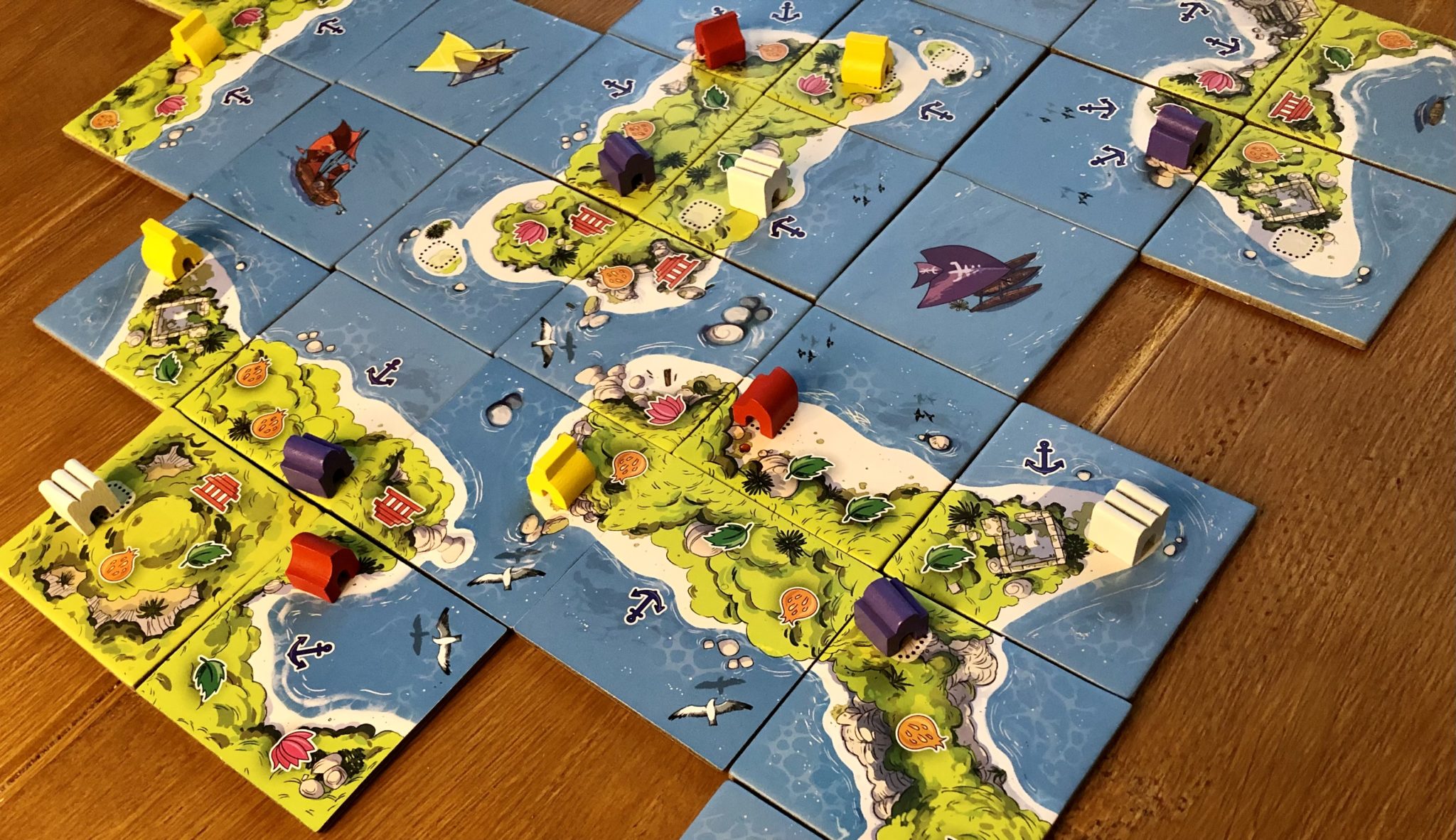
The Verdict
Now, I have played some of the newer tile placement games, especially ones of players forming a map together. This game is on the top end of all those others. The game is simple enough to play, tiles are easy to position, and can fit in many places on the map. There are multiple different resources or icons on tiles to score points with. With all the objective cards, there is a good variety of different goals in the game, so players aren’t trying to accomplish the same thing each round.
Small Islands has a strategic element to it, as you know what you are trying to score on the current round but also plan for the next one with the other objective card you took. Yet you aren’t stuck with the card for a future round, as you will gain additional cards to then decide which ones you want to go for and when.
Small Islands can also become more strategic for those who want additional layers. The mission and reward cards can be swapped out with each other, making many ways to score points, and also responding to what is currently on the board and what tiles you have to get the most points possible. I also like the discovery tokens, as they add another way to gain prestige at the end of the game but in a different way, adding in some randomness to the game but still receiving a great reward for getting them. I wish these were involved in the basic game, and also if there was maybe a side objective that dealt with them.
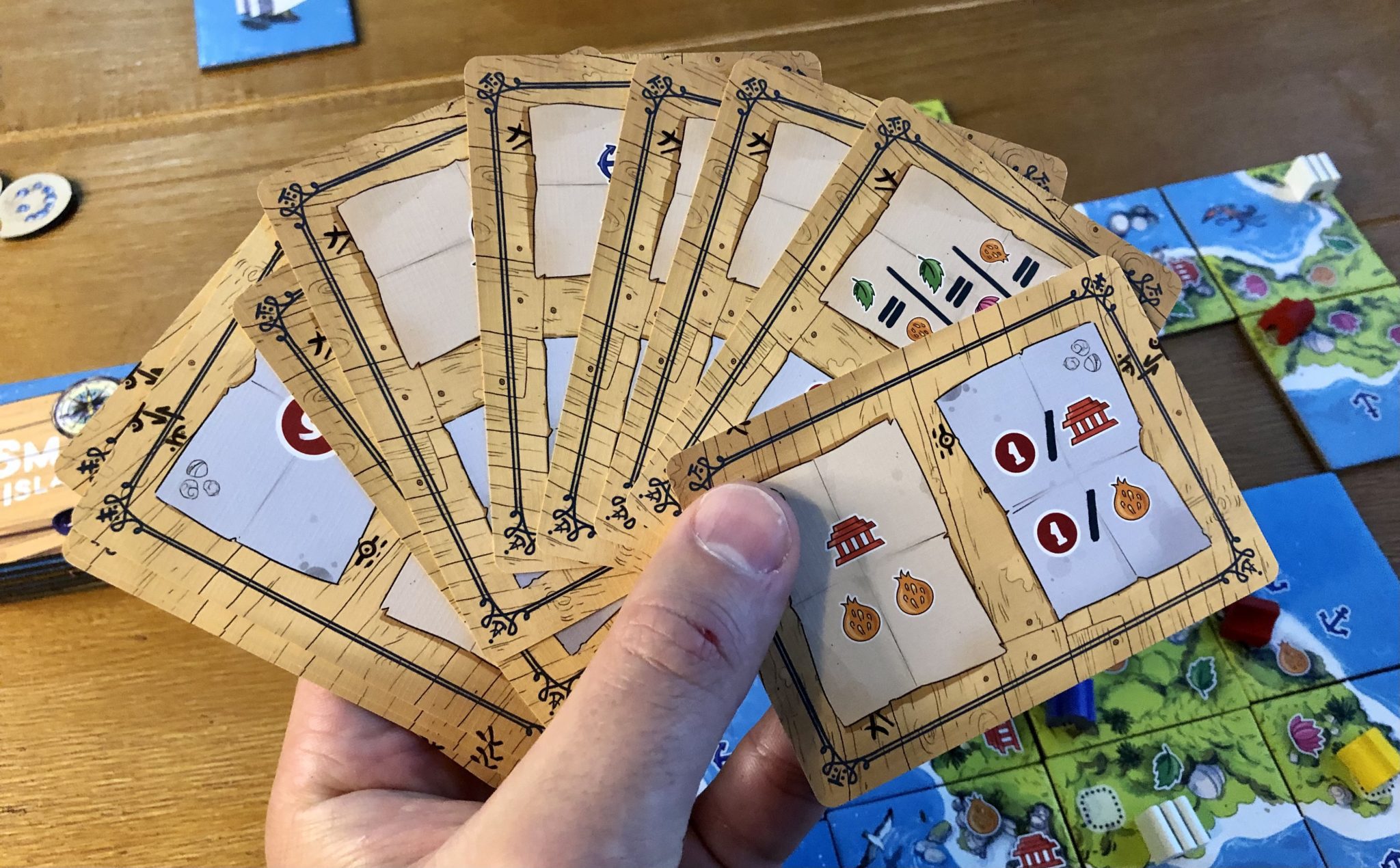
The tiles and other components are all pretty basic, the cards seem a little on the cheaper side of things. The clan houses are neat, as they are different colors and each have a different style, which is a great addition to tell them apart.
The bonus tokens really help to make scoring more points possible without just being lucky to do so. They can be used to benefit you in many ways that you can be creative with. In addition, there is a card full of achievements that players can try to unlock.
Ultimately I’m glad this game was produced by Mushroom Games and brought to the US by Lucky Duck Games. This is a game that I’d be excited to play with my neighbors who don’t play many games, as well as my gaming group who play many different games.
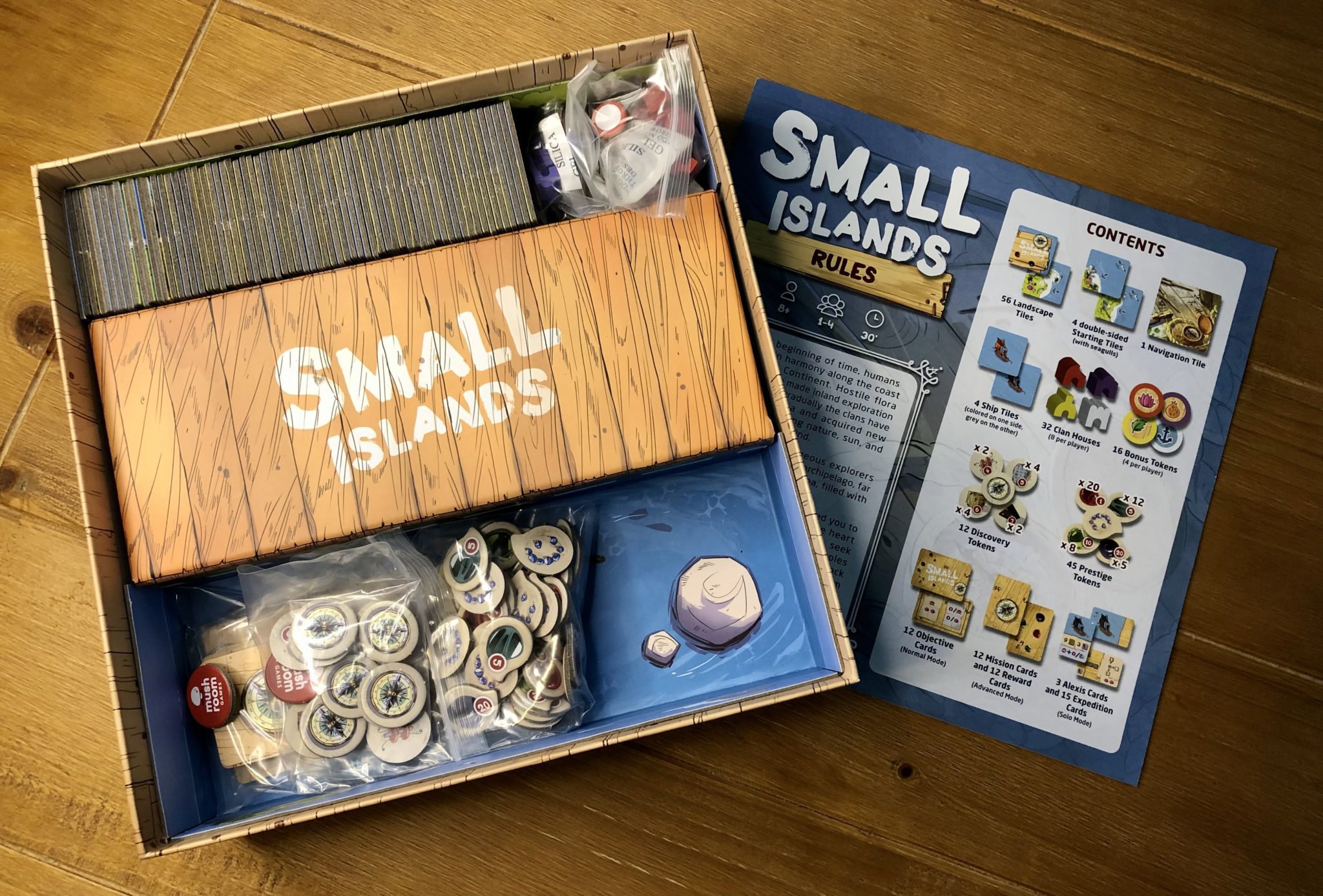
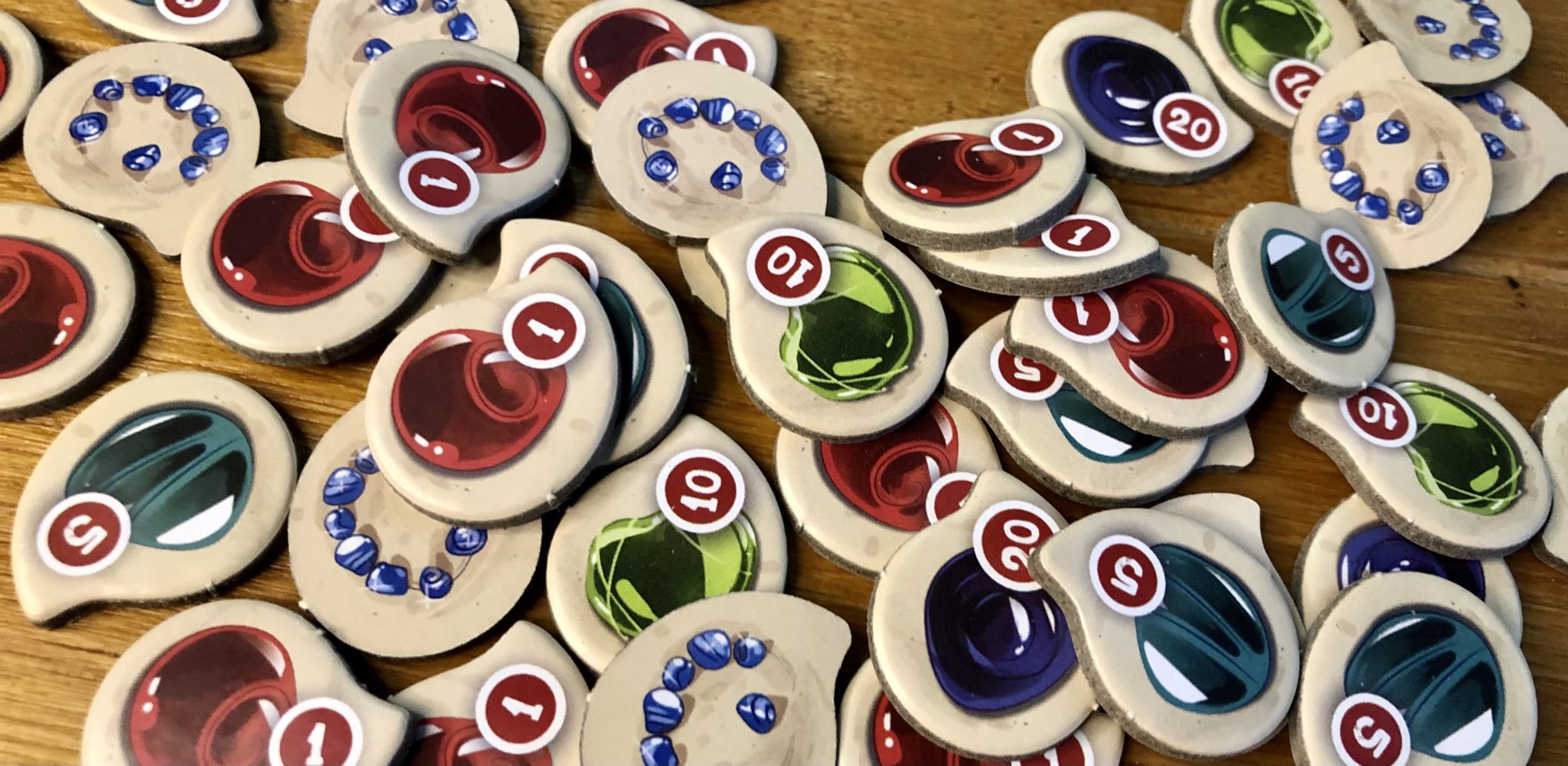
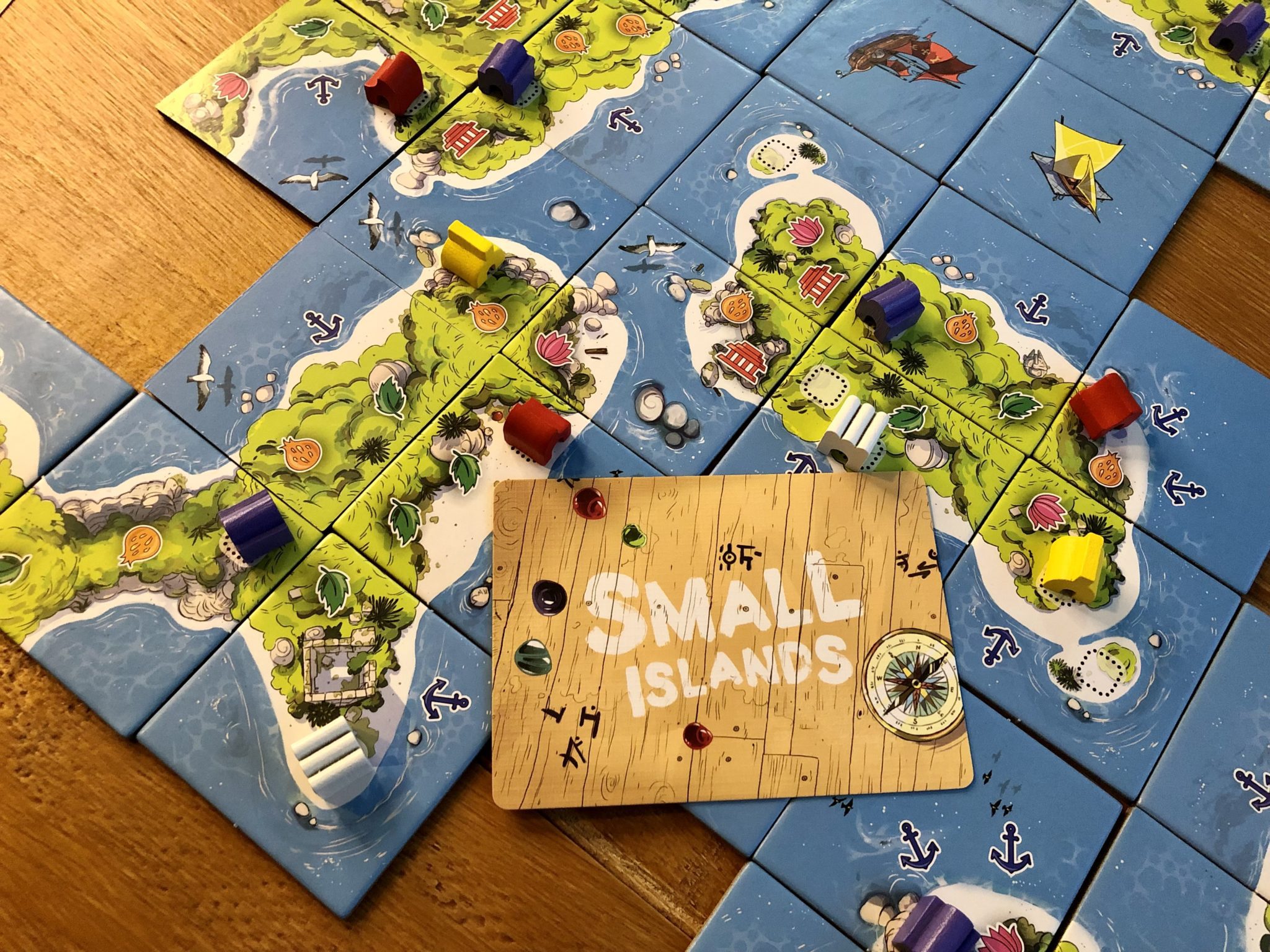
You can grab Small Islands at your FLGS.
Images Courtesy of Lucky Duck Games and Mushroom Games
Have strong thoughts about this piece you need to share? Or maybe there’s something else on your mind you’re wanting to talk about with fellow Fandomentals? Head on over to our Community server to join in the conversation!

